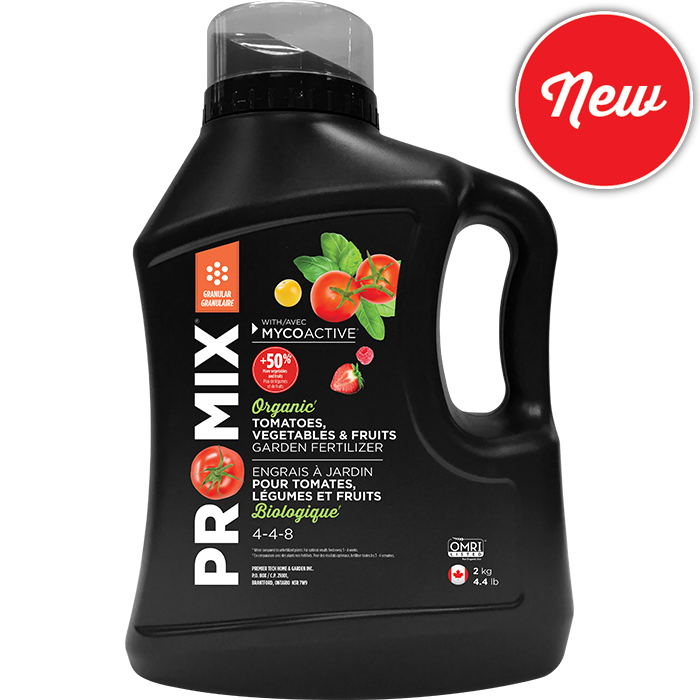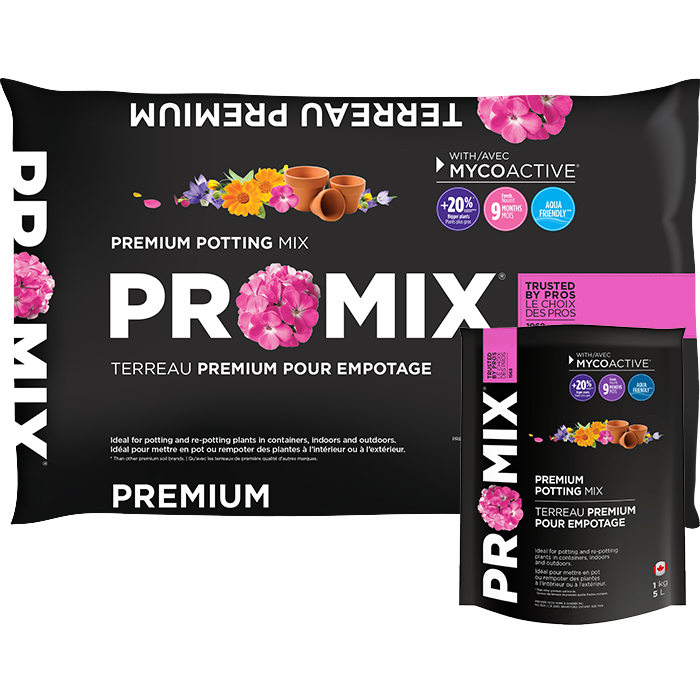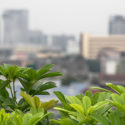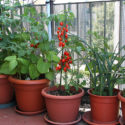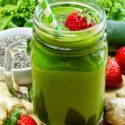By Albert Mondor, horticulturist and biologist
This summer, why not grow blueberries and raspberries on your patio? Growing small fruits in containers is easy and within anybody’s reach. Here are a few small but very productive fruit shrubs that are sure to add colour and taste to your desserts and snacks!
Black chokeberry ‘Viking’ (Aronia melanocarpa ‘Viking’)
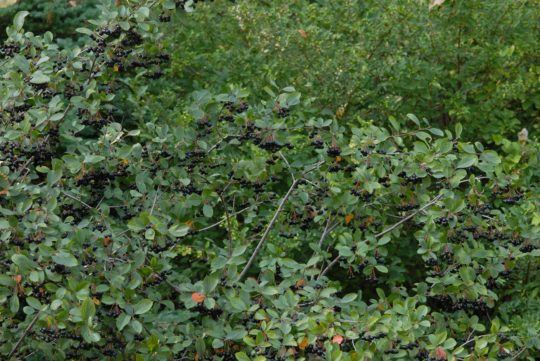
Black chokeberry ‘Viking’ is a lot like the serviceberry. So much, in fact, that we could say it’s a smaller version of it. Hardly reaching 1.20 m in height and as much in width, this shrub is well adapted to container growing and is perfectly hardy in zone 3. Its white flowers, which generally appear in May, are particularly abundant. In July, it produces black globular fruits that aren’t sweet. That is why some prefer to eat them in a dessert containing honey or sugar.
Blueberry Jelly Bean™
(Vaccinium corymbosum Jelly Bean™)
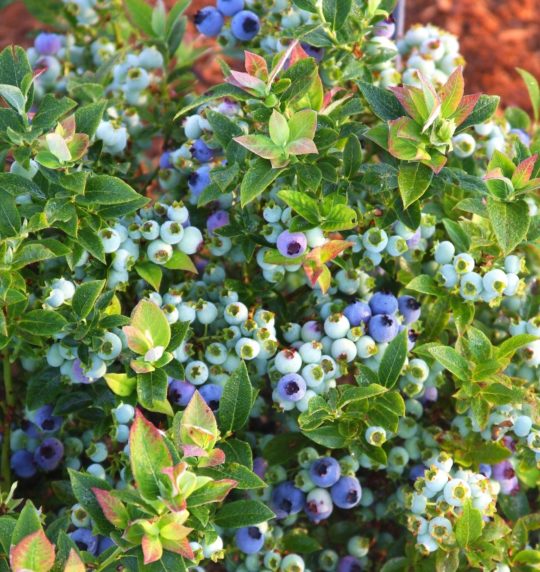
Blueberry Jelly Bean™ is a small-size shrub specially developed to be grown in pots and offering an abundance of fruits with numerous properties. Being among the richest in antioxidants, blueberries reduce abdominal fat and prevent hypertension.
Blueberry Jelly Bean™ is beautiful at various moments in the season. Towards the end of spring, it produces small, white trailing flowers. Then, in July and August, fleshy, slightly acidulous fruits appear, dark blue in colour. Come fall, the shrub’s foliage turns bright red. Resembling a box tree with its thick, round-shaped foliage, blueberry Jelly Bean™ reaches a maximum of 60 cm in height. Its flower buds can withstand temperatures as low as –32 °C.
It is preferable to place it in full sun or in a mid-shade location, but well protected from prevailing winds. Furthermore, it prefers light and wet acidic soils that drain well. A peat/compost-based potting soil such as PRO-MIX® Premium Potting Mix will work nicely, but make sure to add a little powdered sulfur to acidify it slightly.
Honeysuckle (Lonicera caerulea var. edulis)
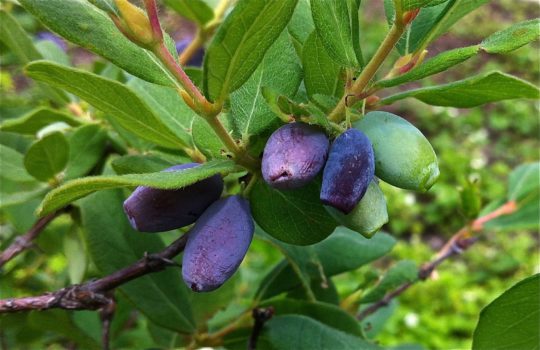
Haskaps are very original, oblong-shaped small fruits that are purplish-blue in colour, like blueberries. Rich in vitamin C and antioxidants, they are produced by a shrub called “honeysuckle”, which reaches between 1.2 and 1.5 m in height. The haskap’s taste is somewhere between the blueberry’s and the raspberry’s, with a touch of rhubarb. Interestingly, haskaps are the first small fruits that can be harvested as they reach maturity towards the end of spring, just before strawberries!
Little demanding, honeysuckles are vigorous shrubs that can easily be grown in containers. With a minimum of six hours of light per day, they produce lots of tasty little fruits the first year, and up to 4 kg per plant after a few years only. As they aren’t self-fertile, a male plant must be planted alongside female plants. Very hardy, honeysuckles can easily survive temperatures as low as – 45 °C in the winter. A perfect plant for northern gardeners!
Pineberry Natural Albino® (Fragaria x ananassa Natural Albino®)
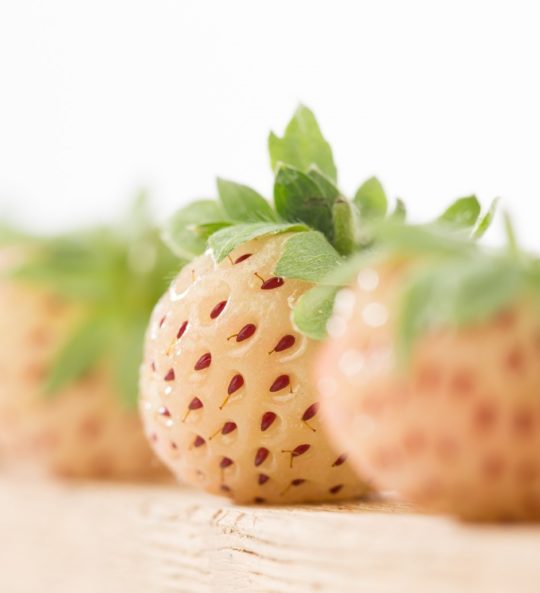
Natural Albino® is a highly original strawberry cultivar producing white fruits covered with small red seed early in the summer. Some say its taste is similar to that of pineapples. Pineberry Natural Albino® isn’t self-fertile. Therefore, it must be planted with one or two other pineberry plants to ensure pollination. In full sun, this plant will quite easily withstand winter in southeastern Canada, especially if it is grown in a fabric plant pot such as a Smart Pot.
Raspberry Raspberry Shortcake™
(Rubus idaeus Raspberry Shortcake™)
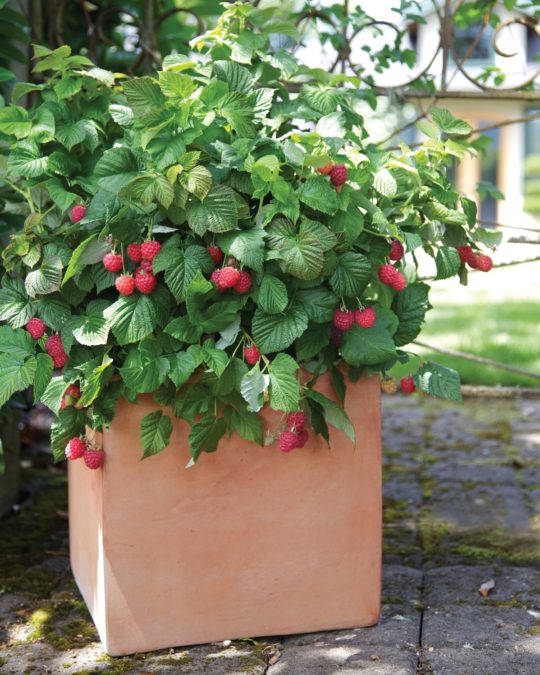
This small raspberry produces an abundance of delicious fruits towards the middle of summer, and its stems are thornless, which makes harvesting even easier. This fruit-bearing shrub has a compact shape, being about 80 cm in height and 60 cm in width. It is hardy in zones 5 and 6, which corresponds to the metropolitan areas of Montreal, Ottawa and Toronto.
Because it is hardy, vigorous and that it adapts to almost any conditions, this raspberry requires little care and can easily be grown in a container, even on a balcony or patio exposed to lots of wind. It will produce a good harvest when planted in peat/compost-based soil with a minimum of six hours of light per day. For a more abundant production, refresh the soil each spring by adding compost and two or three handfuls (60 to 90 ml) of 4-4-8 slow release fertilizer such as PRO-MIX® Organic Tomatoes, Vegetables and Fruits Garden Fertilizer.
Suggested Products

